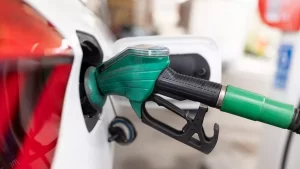When it comes to industrial hydraulic fittings, there are several different aspects to consider. There are Threaded and Flare fittings, and there are also Permanent/Fixed Crimp fittings. You can also find fittings that have a Mechanical grip.
Permanent/Fixed Crimp Fittings
Hydraulic fittings come in a wide variety of styles and materials. It is important to select the right type to ensure the hose performs properly.
The most common material used in piping systems is stainless steel. Brass and copper are also common. They are resistant to fire and theft. Stainless steel is recommended for high-pressure applications. Aluminum is a lighter and cheaper alternative.
Crimp fittings are also widely used. These connections use special fittings that are permanently attached to the tubing. They are durable and can be used for hot and cold water systems. Compared to sweated fittings, crimped fittings are more expensive, but they are also more durable.
A crimping machine is necessary for the process. The machine compresses the fitting onto the hose. This seal creates a leakproof seal. Typically, the crimp ring is sold separately.
Inline automated crimping is a growing practice used by large companies. It uses four precision high-quality steel bearings and produces a smooth and uniform coupling surface.
Threaded
Hydraulic fittings are used to connect hydraulic hoses and components. They seal on the thread and help to prevent leaks. Some types include O-Ring, metal-to-metal, and soft sealing. There are also threaded couplings for industrial rubber hoses.
Threaded couplings can withstand the working pressure of several tens of bars. However, they need to be installed according to the instructions provided. If the wrong part is selected, damage to the thread may occur during installation. This can affect the pressure-holding capacity of the thread.
Tapered threads are generally recognized by their tapered outer diameter. Metric taper is the most commonly used thread type in Europe. Its precise inner and outer diameters ensure high performance and reliability. The metric taper is also known for its precise inner and outer diameters.
Flare
The purpose of industrial hydraulic fittings is to ensure a leak-free process. This is achieved through the use of flared fittings. These fittings provide significant performance characteristics and design advantages.
Flared fittings are typically made of soft steel. They offer excellent corrosion resistance and reduce the need for frequent replacement. Their ability to resist extreme temperatures makes them ideal for marine and submersible applications.
Flared fittings can be used in low-medium pressure systems and are generally preferred in the aerospace, military, and industrial industries. Their compact and easy-to-install design makes them a valuable tool in the piping industry.
In addition to using flared fittings, the hydraulic industry has also developed flare adapters. They are especially useful for inaccessible or difficult-to-reach areas.
Flared fittings can be found in many different sizes and materials. Stainless steel flare fittings are often used in high-pressure applications. Stainless steel is also known for its self-healing properties, so it is also a good choice for marine and submersible applications.
Mechanical Grip
When it comes to hydraulic systems, the choice of fittings can vary. In the past, cone and thread fittings have been the standard for high-pressure applications. However, they can be difficult to install and leak sooner than expected.
Medium-pressure mechanical grip fittings are designed to reduce installation time and costs. They also offer more reliable connections and can help to lower fugitive emissions.
The back ferrule of these grips acts as a mechanical grip, while the front ferrule provides sealing contact. It is important to ensure the correct ferrule orientation is established during the installation process.
Another type of fitting is the sleeve-clamp fit. This design replaces many flange connections. To install, the pipe is cut to length in the field, and the sleeve-clamp fitting is then installed.
Besides being compatible with various tubing types, sleeve-clamp fittings are also resistant to accidental penetration. They may be jacketed with thin sheet metal or rubber.
These types of fittings are commonly made from metals like aluminum. However, plastics are also used. Polypropylene is a common choice because of its good cold flow. But this type of material is also less strong than metals.




